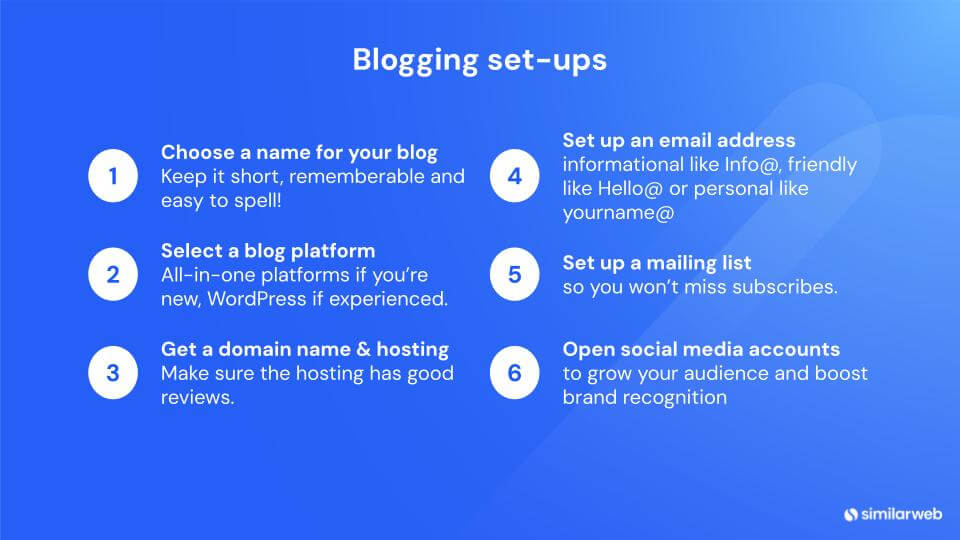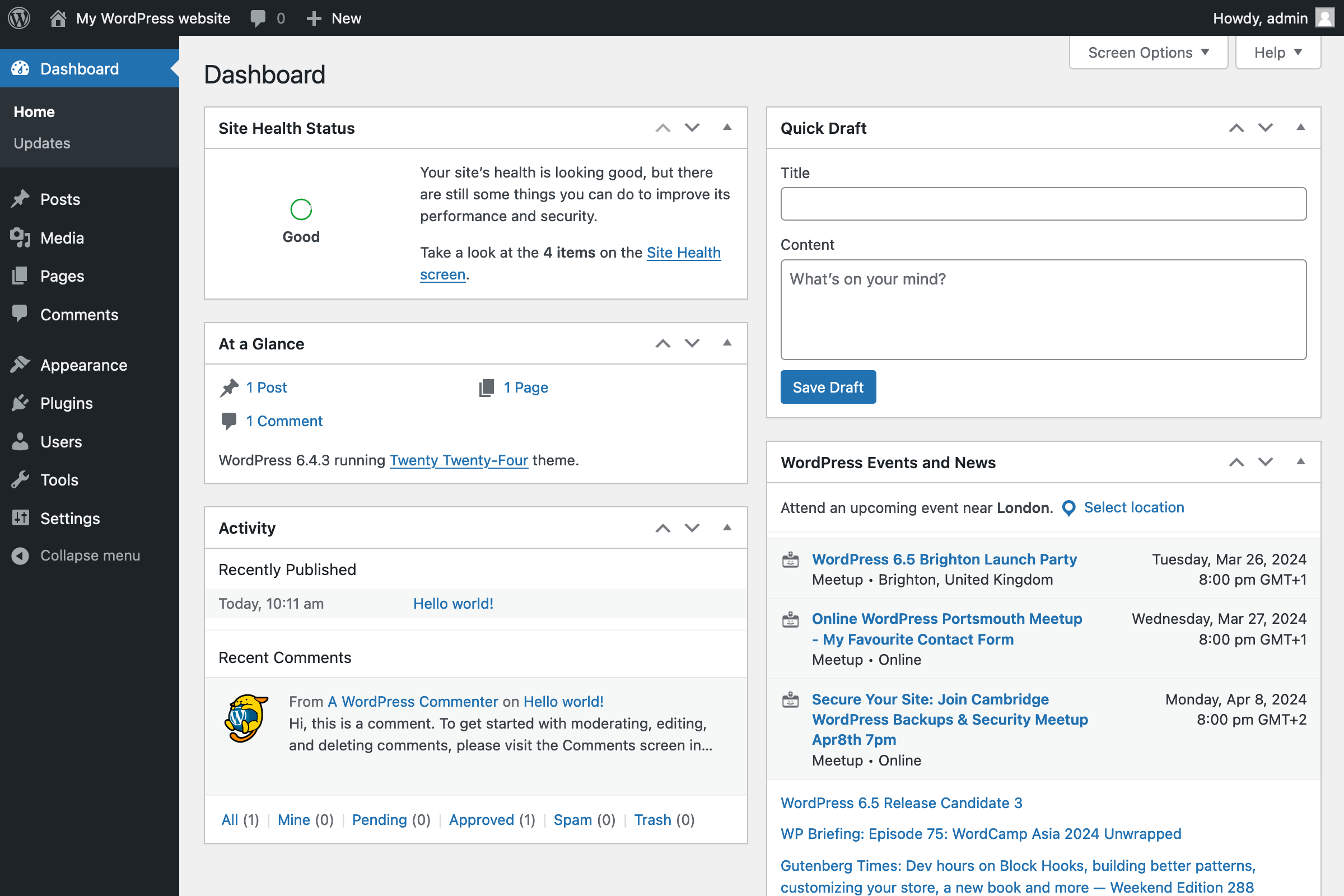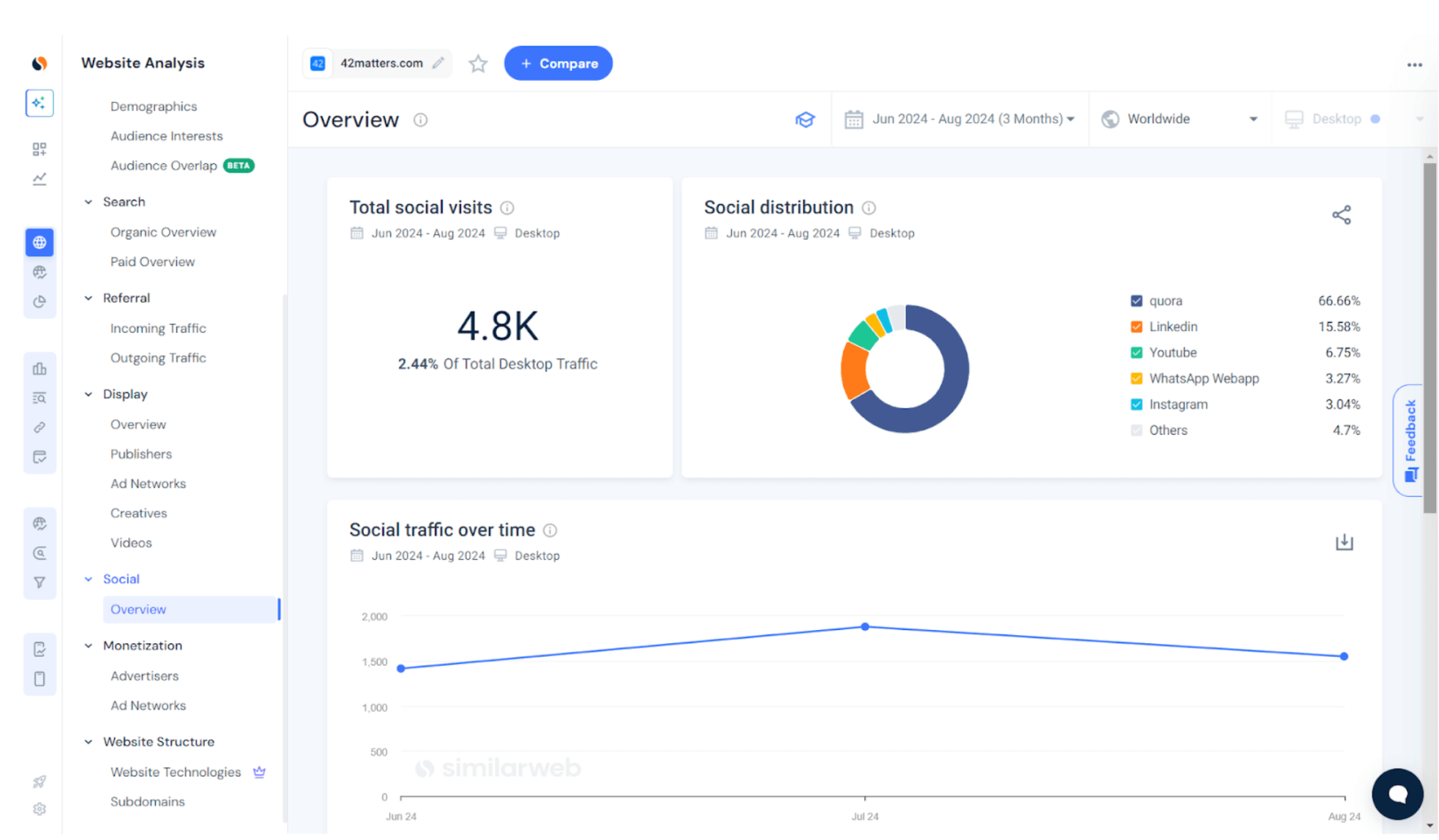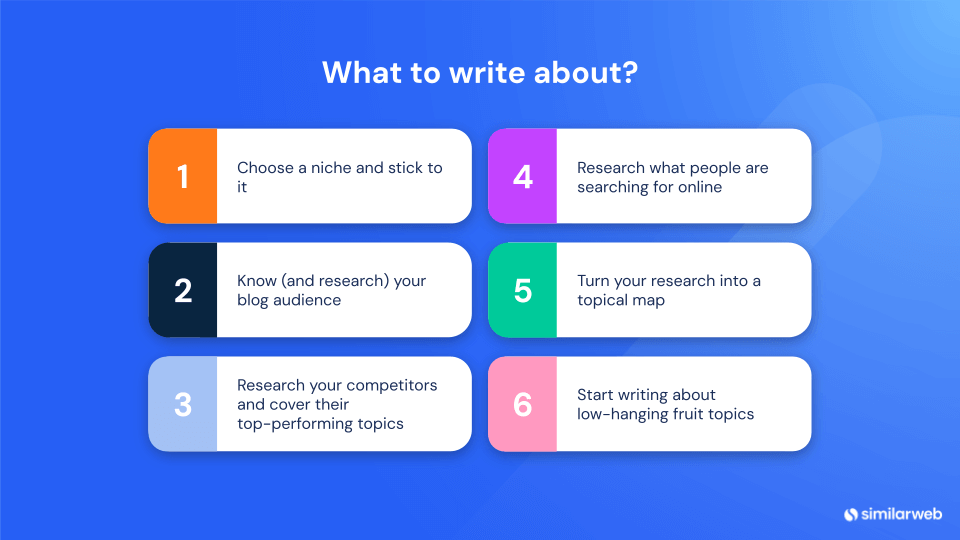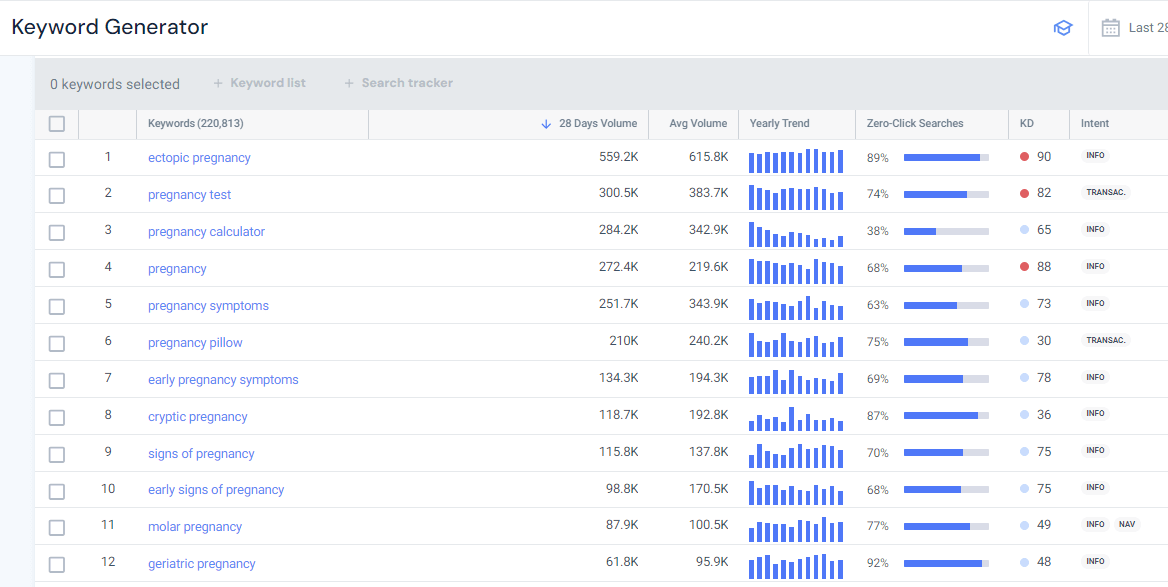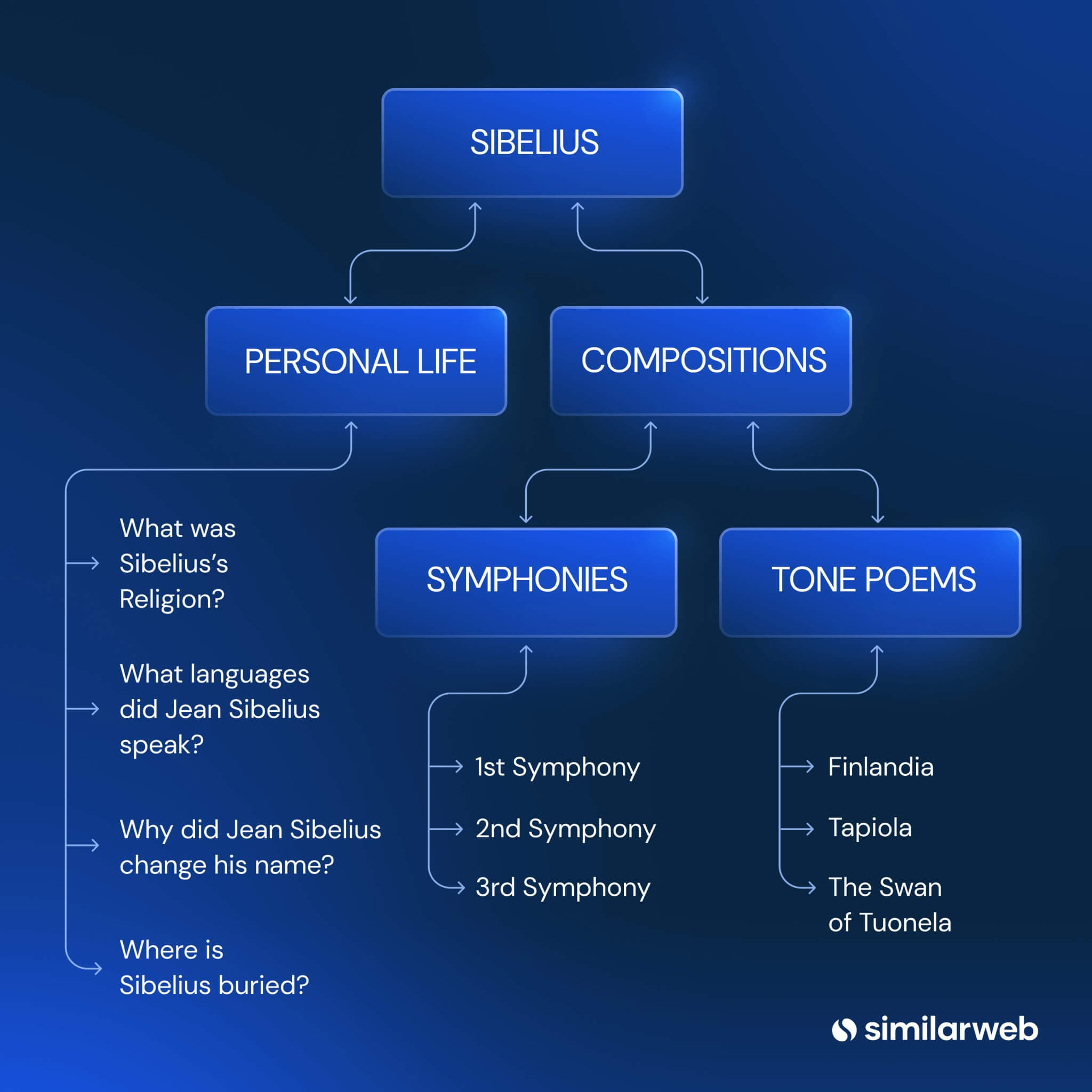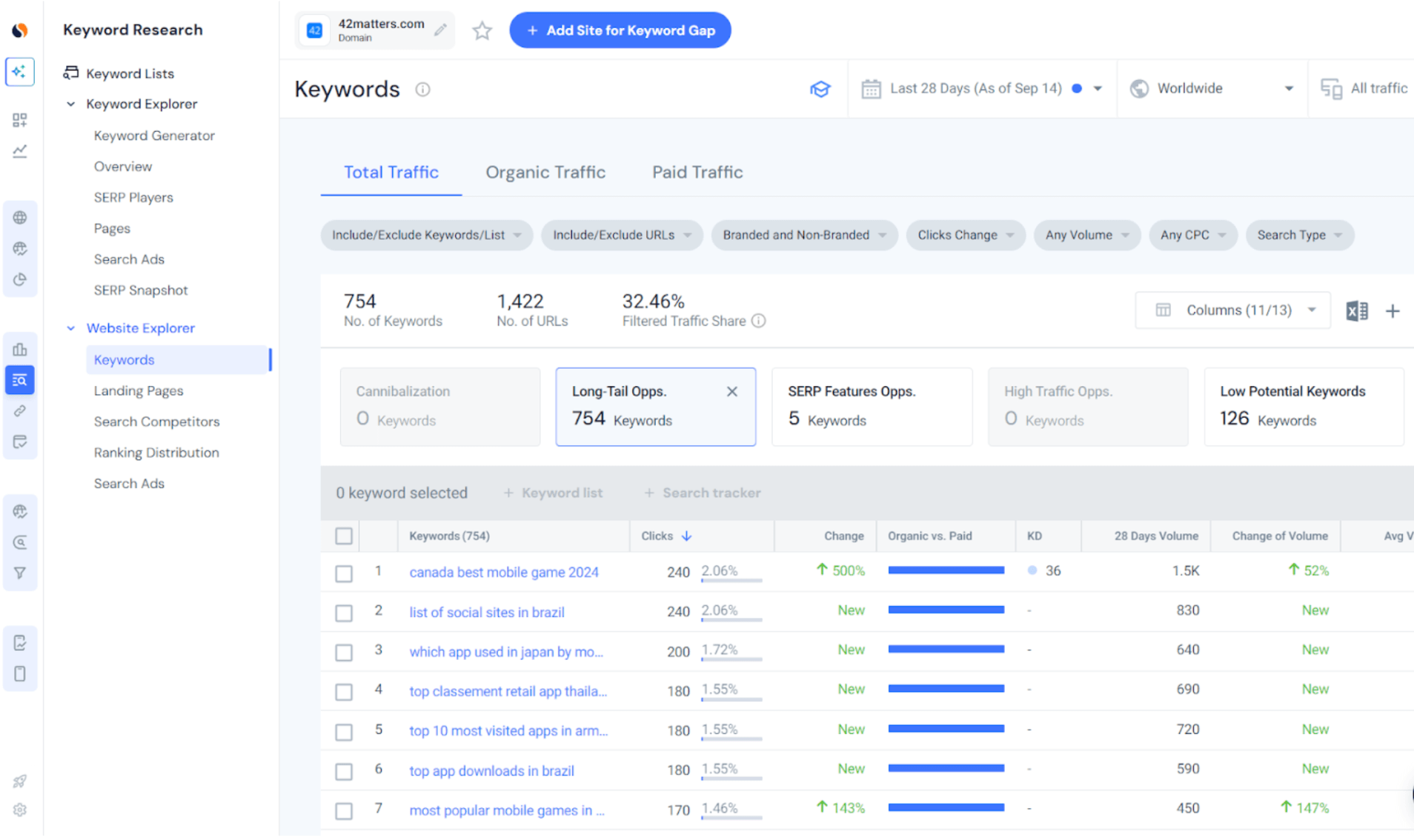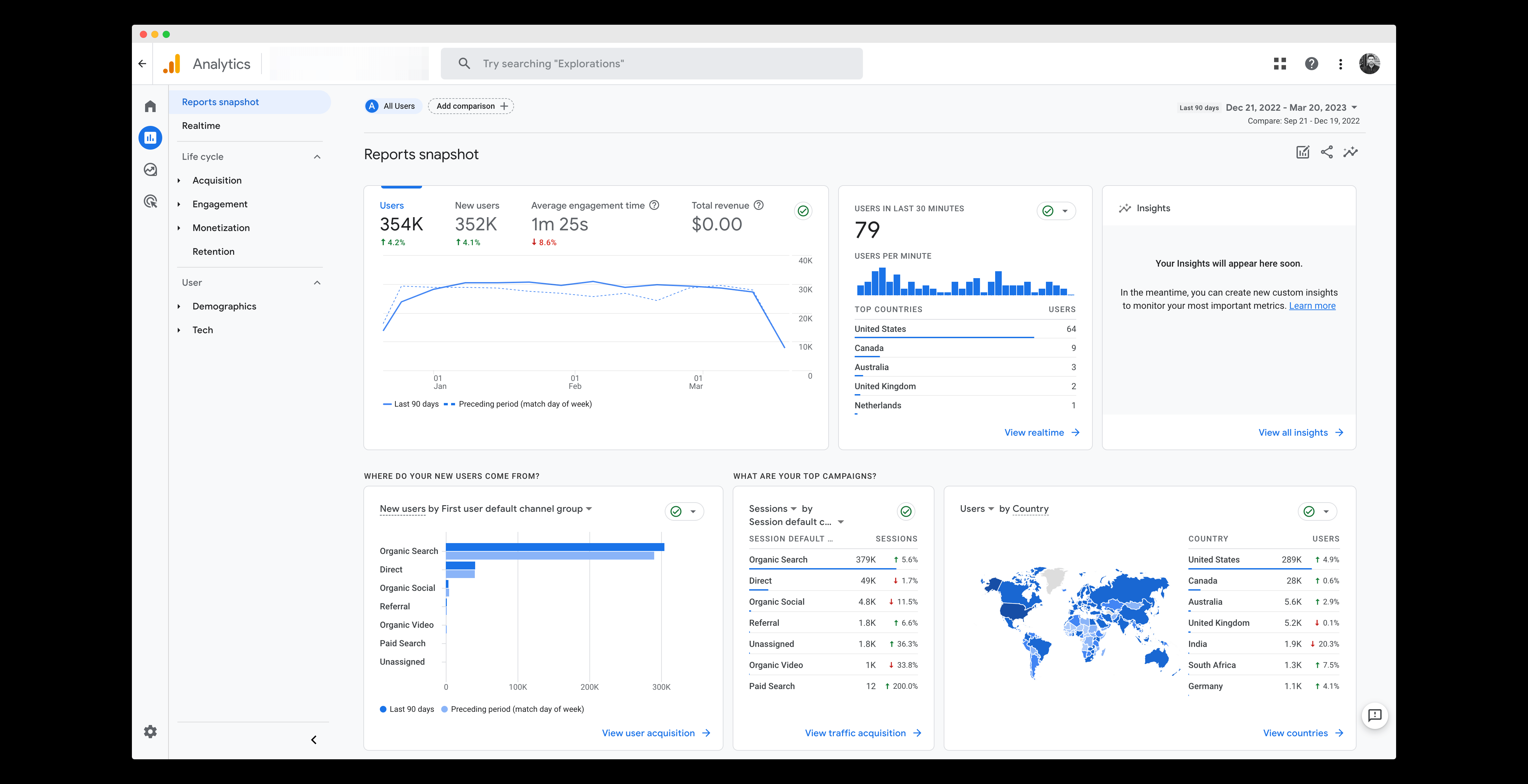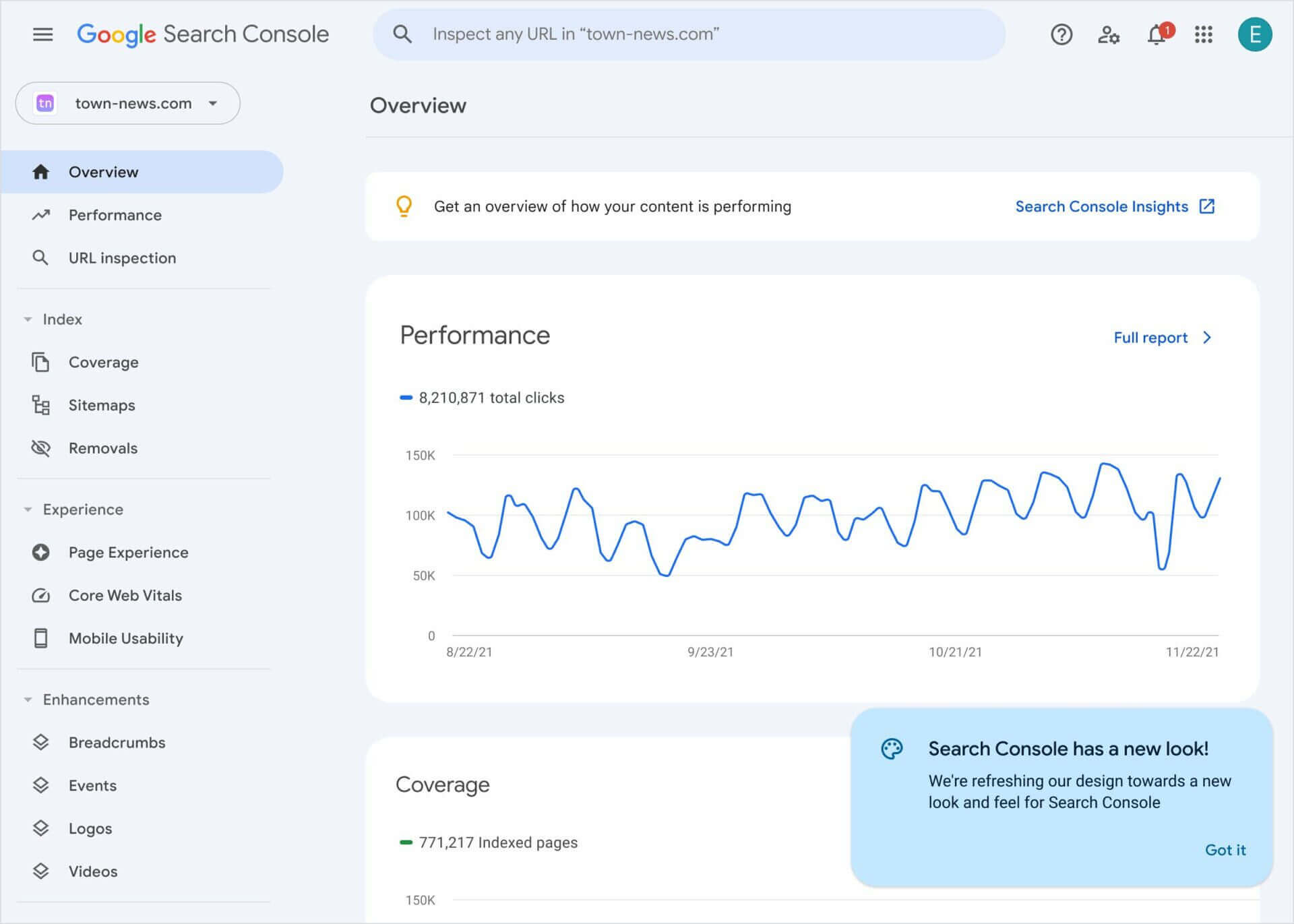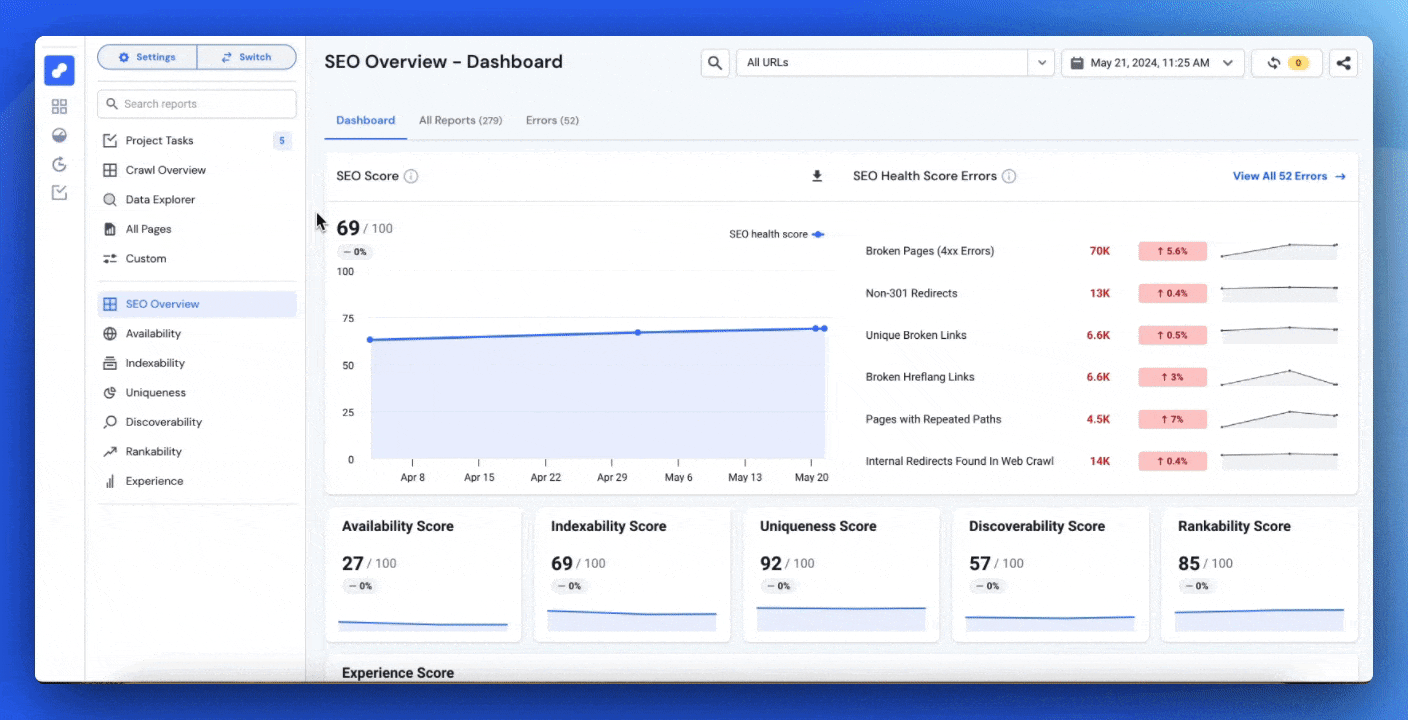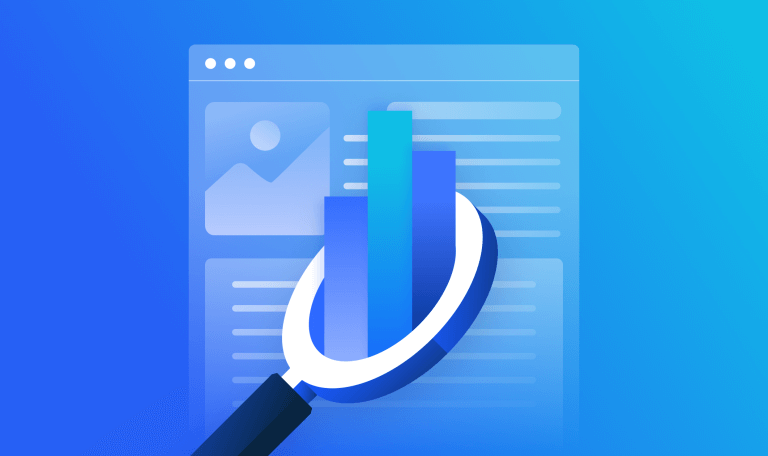 Marketing Intelligence
Marketing Intelligence
Starting a Blog? Best Blogging Guide for Beginners

Blogging has become a fantastic tool for self-expression and professional development. Whether you’re writing about your work or hoping to make a positive impact on people’s lives, your blogging journey starts today.
There are over 600 million active bloggers worldwide. The first steps can feel a little overwhelming, but understanding how to start your own blog will make the process easier and lay the groundwork for future success.
Blogging has evolved from digital diaries into a powerful tool for personal branding and business. A blog can help you reach a wider audience, share your expertise, and build your reputation. In fact, many bloggers even make a living from their blogs. According to a report by Orbit Media, 80% of bloggers say that blogging drives strong marketing results, proving that blogging can be more than just a hobby.
Another study by DemandMetric shows that 90% of businesses use content marketing, including blogging. This shows that a well-maintained, consistent blog can build trust and establish authority in your field. If you’re ready to start a blog, understanding the basics will be crucial to setting yourself up for success.
Why and when to start a blog
Blogging serves many purposes for both individuals and businesses – whether it’s sharing personal experiences, building a brand, or driving organic growth. But what are the best reasons and timing for launching a blog? Let’s explore some compelling motivations and the ideal time to begin your blogging journey.
Enhanced online presence
In today’s digital age, a robust online presence is indispensable for any brand’s success. A well-curated blog provides a platform to establish authority in your niche while offering regular opportunities to engage with your audience. If you seek to expand your reach and connect with potential customers, blogging is an effective strategy.
Sharing knowledge and passion
Do you have a passion for cooking, coding, or working out? A blog offers the perfect outlet to share your expertise with the world. By providing useful information and tips, you can attract like-minded individuals and establish yourself as a trusted authority in your field.
Building an online community
And yes, of course, you can use a blog to meet others who share your interests, and to build a community. The communities formed around blogs can be ones that offer support and feedback for what you’re writing and sharing. Your blog can become a place to connect with people through personal anecdotes, in-depth guides, or whatever else.
It’s not about growing your community to be a massive number of people, but rather about building a group that is trustworthy and genuinely helpful to your audience.
For example, if your blog focuses on health and wellness, your community can share their own experiences, offer advice, and exchange content with one another. It becomes a space where people feel heard and contribute valuable insights for both you and your readers.
This kind of community can also help your blog grow through collaborations, guest posts, and partnerships, creating opportunities for mutual support and expansion.
Monetization opportunities
Blogging can also provide opportunities for financial gain. From affiliate marketing and sponsored content to selling products and services, there are various ways to monetize your blog. As your blog grows, you can explore more advanced options, such as creating and selling digital products or offering consulting services.
Business growth
For businesses, blogs are a valuable tool for attracting and engaging potential customers. A well-optimized blog can help your website rank higher in search results, driving more organic traffic from your target audience. Additionally, blogging demonstrates your expertise in your field, making your business more appealing to clients and customers.
The optimal timing to start a blog
Whether your blog focuses on seasonal trends or evergreen topics, the optimal time to start is right now. Building a successful blog requires time and effort, from setting up the technical infrastructure to creating a substantial amount of content to attract readers.
If you’re targeting a seasonal trend, starting well in advance allows you to prepare and build an audience before peak interest arrives. Even if you begin during the season, your blog can benefit from increased attention.
For evergreen topics, timing is less critical. The key is to focus on creating valuable, enduring content that consistently attracts traffic over time. Having a backlog of content ensures consistency, encouraging readers to return and signaling to search engines that your site is active, boosting your organic traffic.
Blogging set-ups: A step-by-step guide
Getting your blog up and running involves some essential steps. This guide will take you through everything you need to do, from choosing a catchy name to setting up social media accounts.
1. Choose a name for your blog
Coming up with a name for your blog is a crucial decision. It’s not just a name; it’s the foundation of your brand. Your blog name should be:
- Memorable: Something that people will easily remember after hearing it once.
- Easy to spell: Avoid using complicated words or spellings that could make it difficult for people to find your blog.
- Brand-relevant: Choose a name that reflects the niche or topic of your blog.
For example, if your blog is about vegan recipes, “VeganEats.com” would be a great fit.
Here are some additional tips for choosing a strong blog name:
🔍Do a quick Google search to make sure the name you want is available: There are many creative domain name generators out there that can help you brainstorm ideas.
🔩Keep it short and sweet: Long blog names can be difficult to remember and type.
🔢 Avoid using numbers and hyphens: These can make your blog name look unprofessional.
2. Select a blog platform
The platform you choose will be the foundation of your blog. There are many different blogging platforms available, each with its own strengths and weaknesses. Here are two of the most popular options:
- WordPress: WordPress is the most popular blogging platform in the world. It is an open-source self-hosted platform, which means that you will need to find your own web hosting provider. However, WordPress offers a great deal of flexibility and customization
- Wix/Squarespace: Wix and Squarespace are common platforms for all-in-one website builders that are perfect for beginners. They offer a user-friendly interface and drag-and-drop functionality, making it easy to create a beautiful blog without any coding knowledge.
Here are some things to consider when choosing a blogging platform:
🧑💻Your technical skills: If you are not comfortable with technology, then Wix or Squarespace may be a better option for you.
💸Your budget: WordPress is a free platform, but you will need to pay for web hosting. All-in-one platforms like Wix and Squarespace offer both free and paid plans. Building the site is also an expense and can be done more easily on the all-in-one platforms without further cost.
🛞Your customization needs: If you want a lot of control over the look and feel of your blog, then WordPress is the better option.
3. Get a domain name and hosting
Your domain name is the address of your blog on the internet. It’s what people will type into their web browser to find your blog. Your hosting provider is the company that stores your blog’s files and makes them accessible to visitors.
Here are some tips for choosing a domain name:
-
- Keep it short and memorable
- Make it easy to spell and pronounce
- Choose a domain name that is relevant to your blog’s niche
- If the .com domain isn’t available, try an alternative like .net or .co
And here are some tips you want to bear in mind when choosing a hosting provider:
📖 Read reviews from other bloggers: What are people saying about the hosting provider?
⚖️ Compare pricing plans: See which plan is most suitable for your needs.
📞 Make sure the hosting provider offers good customer support: Are you able to reach out easily if you have technical issues?
In summary, premium domains are shorter, more desirable, and offer added brand credibility but can be costly. If you’re on a budget, plenty of affordable options exist—just avoid numbers or symbols that may confuse visitors.
4. Set up a professional email address
Align your email address with your domain for a more professional look. You can opt for something informational like info@domain.com, friendly like hello@domain.com, or personal like yourname@domain.com. A professional email address boosts your credibility and shows you’re serious about your blog.
Typically, email setup is done through your hosting platform. When you purchase hosting, it usually includes email services that match your domain. While it might seem complex, most hosting platforms provide easy-to-follow guides. This ensures your email looks professional and aligns with your blog’s branding.
5. Set up a mailing list
A mailing list is essential for building your audience and driving repeat visits to your blog. Email marketing helps retain subscribers by keeping them engaged and invested in your content, boosting both engagement and revenue.
Set up your mailing list early, even before your blog goes live. Many all-in-one platforms offer built-in mailing list features, making it easy for beginners to get started without technical hassle. If you’re not using an all-in-one platform, standalone providers like Mailchimp or ConvertKit are simple to use and integrate with most blogs.
Once you’ve chosen an email provider, create funnels sign-up forms and place them strategically on your site to capture visitor interest.
6. Set up social media accounts
While this guide focuses on your website, social media is a vital – additional step – for building your brand and driving traffic over time. You’ll want to start posting on relevant social media platforms before your site goes live to grow your audience and boost brand recognition. The March 2024 Google Update made social media presence even more important, especially for smaller blogs.
Choosing the right platforms helps you attract and engage your audience, enhancing visibility and credibility. Since it can take months for Google to index a new site, social media will initially be your main traffic driver.
Select platforms that align with your brand and are easy to manage. If you’re part of a team, decide together; if you’re working solo, focus on platforms you can handle.
You can use Similarweb’s Competitive Intelligence tool and run a social media competitor analysis to see which platforms are most effective and relevant for your competitors, helping guide your strategy.
Next up, what to write about
Successful bloggers know that good content is 👑 king. Choosing relevant topics that provide value to your readers is the no. 1 key to keeping them engaged.
Here are some guidelines to help you select topics wisely and focus on the right audience:
Choose a niche and stick to it
Your niche should be something you love and want to learn more about. If blogging feels like a chore, your readers will notice. Ideally, choose a niche that gives you an edge – whether it’s specialized knowledge or a unique personal experience. For example, if you’re passionate about travel, a travel blog sharing your journeys and tips could be a natural fit.
Know (and research) your blog audience
Understanding your audience and what they’re searching for is key to success. Similarweb’s Audience Analysis tool can help you gain insights into their interests, allowing you to create content that resonates. The more you know your audience, the more relevant and engaging your content will be.
You can compare your website with your competitors to determine what drives similar audiences’ interests and to create content that resonates with them. With the right audience and the right content, your blog’s engagement and retention will grow. The more you know about your audience, the more relevant the content you create for them.
Research your competitors
Use Similarweb to run a competitive analysis of your website. Identify which topics drive traffic for your competitors, the keywords they rank for, and what content works for them. Understand your competitors’ strategies and explore how you can differentiate your blog. Analyze their social mentions, track trending topics, and look for market gaps to fill. This research will inspire fresh content ideas and opportunities for your brand.
Cover your competitors’ top-performing topics
What subjects are your competitors ranking for? While you can start with keyword research, it’s often easier to begin by analyzing your competition. Focus on broader topics vs. keywords that are more isolated, and as such, have lesser search intent.
For example, if vegetarian meal plans are working well for them, consider creating richer content like detailed guides or an interactive meal-planning tool. Offering unique insights and valuable resources helps you stand out and draw more attention to your blog.
Find out what people are searching for online
Now it’s time to do your keyword research. Use tools like Similarweb’s Keyword Research Tool, Answer the Public, Answer Socrates, Google SERP Auto Fill, and People Also Ask to discover what people are searching for in your niche.
Free tools can give you ideas, while Similarweb’s premium research tool provides valuable data such as search volume, seasonality, search intent, and related keywords.
Content based on these insights serves as a strong foundation for your blog, increasing its chances of ranking higher in search results.
Turn your research into a topical map
Structure your research by creating a topical map to visually organize your topic clusters and their relationships. This ensures you cover all aspects of your niche comprehensively, building a body of work that positions you as an expert. A well-structured topical map also streamlines your content planning and strengthens your internal linking strategy.
Start writing about low-hanging fruit topics
Your new blog won’t likely rank on the first page, and quite possibly not even the second or third page for any of these pages, even for moderately competitive topics.
This is where you want to find your low-hanging fruit by ranking for long-tail keywords and low-competition topics. These low-hanging fruit topics might not generate a ton of traffic, but any traffic at all for your new blog is much needed to get your site off the ground. Eventually, as your blog gains authority, you can tackle more competitive keywords.
Useful blogging tips
After knowing what to write about, let’s get to the how. A great article includes much more than just words on the page. Here are some of the ways writing can help your content achieve the best results.
1. Optimize for search intent
Knowing what your audience is searching for will help you write on-topic content – content that contains exactly what your visitors need to know. There are several types of search intent, including informational, navigational, transactional, and commercial. Writing content that follows these types of search intent will serve your visitors better, increasing user engagement and retention.
2. Use your keywords in the text
In three words: SEO needs keywords. Read our guide on how to use keywords for SEO.
The short of it is this: you need to have your primary and secondary keywords organically flow through your content, in the title, the heading tags, and in the body text. This helps search engines understand your content a little bit better, and can help you rank a little bit higher, so long as you don’t stuff your content with keywords (which can send readers running the other way and can actually hurt your search rankings).
3. Have an outline before writing
Creating an outline helps organize your thoughts and keep your writing on track.
With your key points and evidence up front, you can be confident that everything is covered and in the right order. This makes it easier to write a solid piece while letting you maintain an air of mystery. Readers will be impressed when you bring an orderly structure to complex topics.
4. Create capturing headlines
The headline is one of the first things they’ll see, so it’s crucial to get it right. Your language here should be bold, simple, and attention-grabbing. Your headline should also be short and sharp, while still providing enough information that the reader will want to click through.
There are formulas you can use – such as ‘number + adjective + keyword + promise’ – to craft great headlines. You can also A/B test different headlines to figure out which ones will perform best for your readers.
5. Use on-page SEO best practices
On-page SEO is a practice that improves the ranking of your pages in search engines, and at the same time, provides a better experience to users. Read our article on on-page SEO for more information on best practices.
Examples of good practices are meta tags, content structure with H1 tag and subheadings, images with alt text, content hierarchy, and proper use of internal and external links.
Post-publish: What to do after your blog is live
Your blog is live, but that’s just the beginning. Now it’s time to build your brand, engage your audience, and drive traffic. There’s no instant fix – growth takes ⏰ time.
Simply follow this formula to turn your blog into an authoritative site in your niche:
Build a brand beyond the blog
Your blog won’t be discovered just through search engines – it can be the foundation of a larger brand.
A strong brand gives your blog a memorable identity. Keep your messaging, images, and tone consistent, and ensure everything reflects your blog’s purpose. Active social media accounts and a mailing list will help you connect with readers and build a following.
Collect emails and build a mailing list
Start building a mailing list by offering something valuable in exchange for email sign-ups—such as e-books, masterclasses, or special tips. Regular updates, personalized content, and promotions keep readers engaged and bring them back to your blog.
A successful mailing list is a continuous source of traffic. Be consistent with your emails – whether it’s welcome messages, weekly newsletters, or special announcements – to keep your audience engaged and coming back for more.
Leverage social media
To grow your blog’s audience, be active on social media. Different social platforms cater to different audiences. For example, Instagram for visuals and LinkedIn for professional connections.
Once you know which platforms work best, focus your efforts there. Tailor content to each platform, engage with followers, and use social and web analytics to track performance and adjust your digital strategy.
Keep posting fresh content
Regularly updating your blog with fresh content is essential for maintaining and growing your audience. New articles signal to readers—and search engines—that your site is active, which can boost SEO.
Use a content calendar and stick to your topical map to keep ideas organized and aligned with your blog’s themes.
Regularly sharing fresh content not only strengthens your brand but also gives you material to promote on social media, driving traffic and expanding your reach.
Optimize monetization methods
Having various income streams is key to long-term success. Beyond ads and affiliate marketing, explore options like sponsored content, online courses, or consulting services.
Diversifying revenue sources reduces risk Similarweb’s website analysis feature can be accessed under the “Monetization” screen and then “Ad Networks”. This offers detailed analytics on potential partners and strengthens your blog’s economic value.
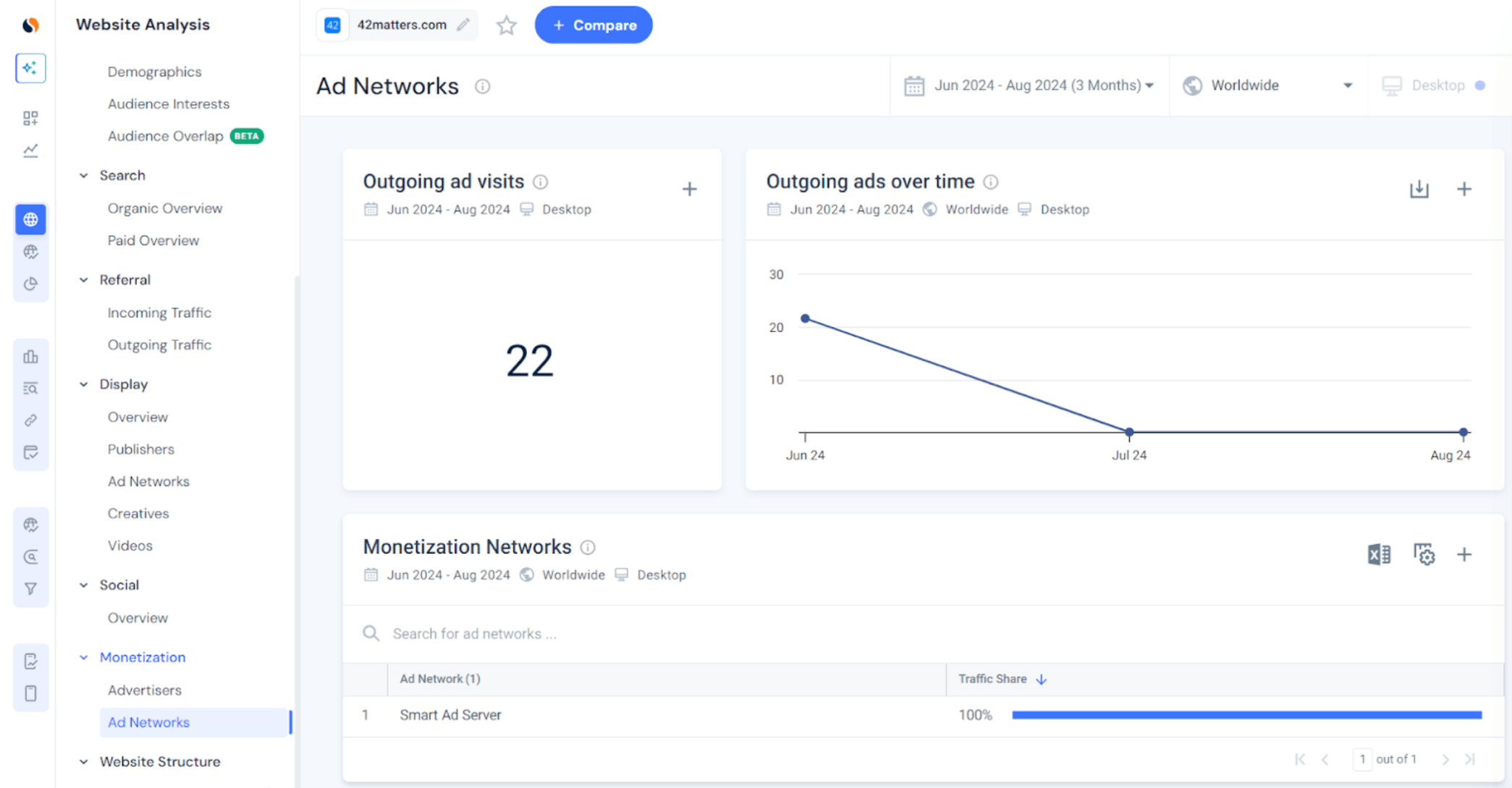
Monetization – Ad networks
Meanwhile, Wappalyzer shows you exactly what technologies successful blogs are using so that you can try the same tactics.
Connect to Google’s free tools
Linking your website to Google’s suite of analytics tools is essential for any blogger aiming to improve performance. These tools provide valuable data to help plan and execute your content and SEO strategies, giving you the insights needed to make informed decisions for your blog.
Google Analytics
Use Google Analytics to track how visitors interact with your blog—see which posts are popular, where traffic comes from, and more. User data (such as age, location, and session duration) helps you better understand your audience and improve your content strategy. Set up goals and funnels to track the effectiveness of marketing campaigns, and review your data regularly to spot trends and new opportunities.
Once you’ve set up goals and funnels with Google Analytics, you can track specific user actions in order to learn how well your marketing campaigns are working, and then target improvements accordingly. Because of this, understanding these metrics in more depth can help you maintain and build upon your readership.
Be sure to check the information in your Google Analytics at least once a week to see if any trends are emerging that might open new opportunities for your blog. In order to see your important metrics at a glance, you can use custom reports and dashboards.
Google Search Console
Google Search Console is a useful SEO tool. It helps you track the appearance your site has in the search results. It’ll help you determine what keywords your blog already pops up for and figure out any technical issues that could be affecting your blog’s visibility.
Every few days, make sure to check the performance reports and figure out which search queries are sending you traffic. Check the Index Coverage report regularly to see if there are any indexing problems, and the URL Inspection tool allows you to get more detail on what’s happening with any URL you put in.
Remember that optimizing your content for a better user experience and fixing the errors Google Search Console alerts you to will help you get more traffic through search and increase your search rankings. The information you get from Search Console should help you refine your SEO strategy.
Google AdSense
While AdSense can be added after reaching 10,000 page views or 50 posts, even small revenue can be motivating in the early stages. As your blog grows, optimize your ad placement and formats to boost earnings without compromising user experience.
As your blog traffic grows, Google AdSense will serve the more relevant ads, and all it takes to maximize your revenue is some optimization of your ad locations (you don’t want to annoy your readers by using up a chunk of your blog space).
You could also experiment with different ad formats and placements to increase your blog’s profits without affecting the user experience for your readers.
Monitor your blog’s performance
Consistent monitoring is key to long-term success. Track metrics like keyword rankings, traffic sources, and engagement using Similarweb’s Rank Tracker to see how your content performs. Regularly audit your blog for SEO, speed, and user experience issues, and make adjustments as needed to stay on track.
Track your keyword rankings
Once you created blog posts, track their keywords. Using Similarweb’s Rank Tracker you can follow your blog’s search ranking and keyword performance. See your rankings improve, watch for keyword cannibalization, audit your content, and track the competition.
Check-in frequently with your strategy in order to maintain rankings and keep up with the latest best practices for SEO.
Audit your site
Regular SEO audits are crucial in identifying major issues that could be harming your blog’s performance including site speed, security and user experience.
These audits should include on-page elements, technical SEO, and off-page factors such as backlinks. With the help of our site audit tool, you will receive detailed reports for each element, which will help you to better prioritize and fix the issues
Additionally, you should audit mobile-friendliness and page load times to increase user satisfaction and engagement. Regularly performing in-depth audits will allow you to keep your blog in good working condition and set it up for the long haul.
Don’t give up
Blogging takes time, especially in the beginning. 😩
You’ll face setbacks, but persistence is key and will set you apart from the millions of other bloggers out there. Keep posting regularly, engage with blogging communities, and learn from experienced bloggers.
Remember: every successful blog started small, so stay patient, seek out collaborations and guest bloggers, and stay motivated – the more effort you put in, the more you’ll get out.
Start your blogging journey with Similarweb
Being a successful blogger involves much more than just writing—you need to build a brand, optimize monetization, and constantly measure performance. Persistence is key, and with the right tools, you’ll be well on your way.
Ready to kickstart your blogging success? The secret to a successful blog is having the right digital insights. With Similarweb’s Digital Data, you can:
- Understand your competitive landscape and perform keyword gap analysis
- Explore your competitors’ content for new ideas and opportunities
- Discover trending keywords and niche topics to write about
FAQs
How often should I update my blog?
The frequency depends on your goals and availability, but once you have content, post it regularly. Posting at least once a week helps maintain a relationship with your followers. The more visible you are, the more likely people will return. Consistent updates also benefit search engine rankings.
Can I start a blog for free?
Yes, you can start a blog for free—many platforms like WordPress.com and Blogger offer that option. However, if you want a custom domain and design, it will cost money. Free options come with limitations, so if your blog is growing, you may want to invest in an upgrade.
What should I blog about?
Write about topics you know and care about. Do some market research to see what people are interested in and why. Make sure to provide value. If your readers want tech reviews, give them that. If they prefer lifestyle tips, focus on that.
How do I start a news blog?
To start a news blog:
- Choose a niche or specialization (local news, politics, entertainment) to stand out
- Select a blogging platform and create a professional-looking site
- Publish content regularly to build credibility
- Use SEO, social media, and email marketing to drive traffic
- Ensure your news is accurate and well-sourced
- Engage with your audience and consider monetizing with ads or sponsored posts
How can I drive traffic to my blog?
Increase traffic through SEO techniques, social media sharing, email marketing, guest blogging, collaborating with other bloggers, and engaging with readers on your blog and others. Regularly producing quality content will help you grow your readership organically over time.
The #1 keyword research tool
Give it a try or talk to our marketing team — don’t worry, it’s free!

